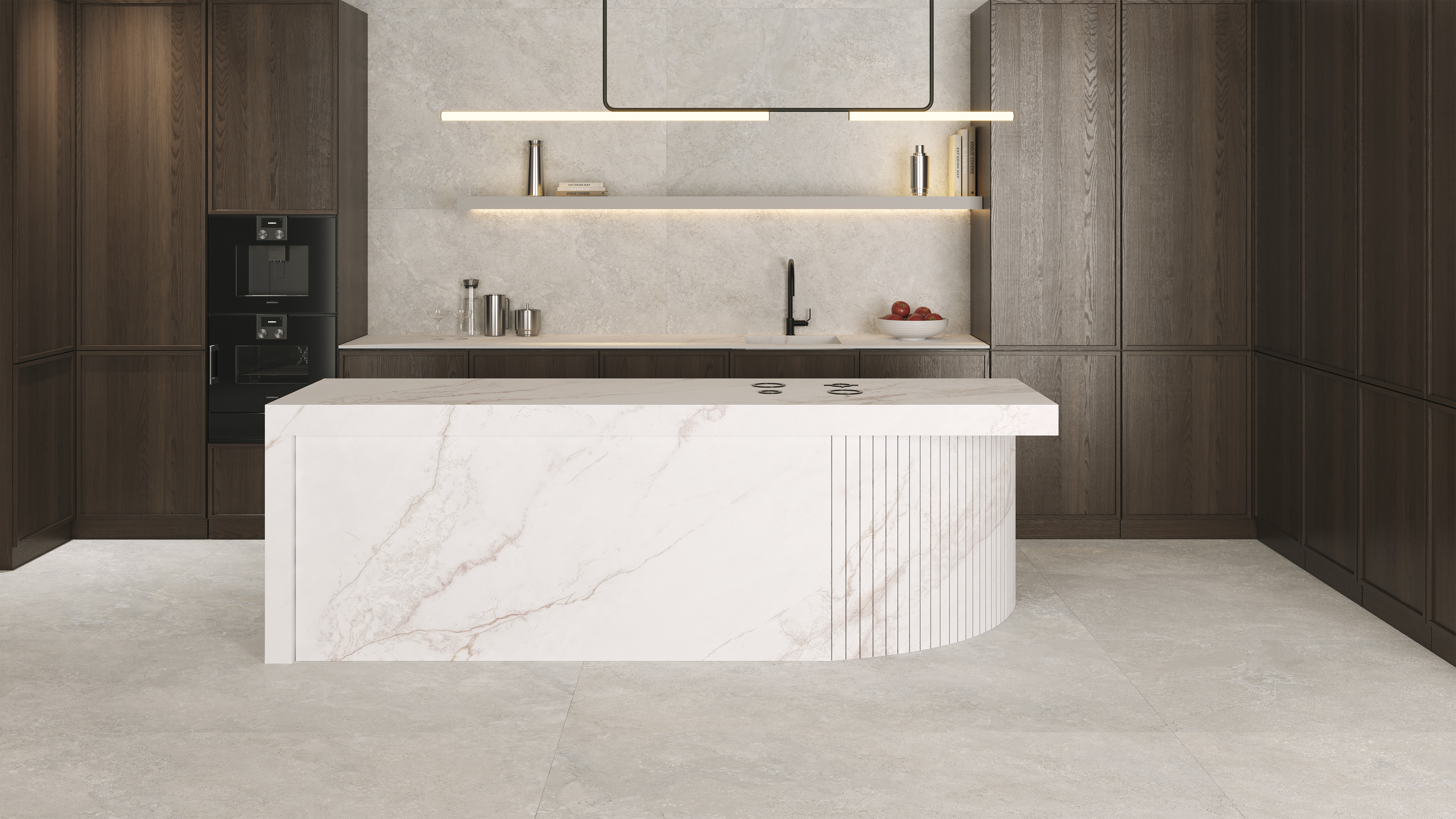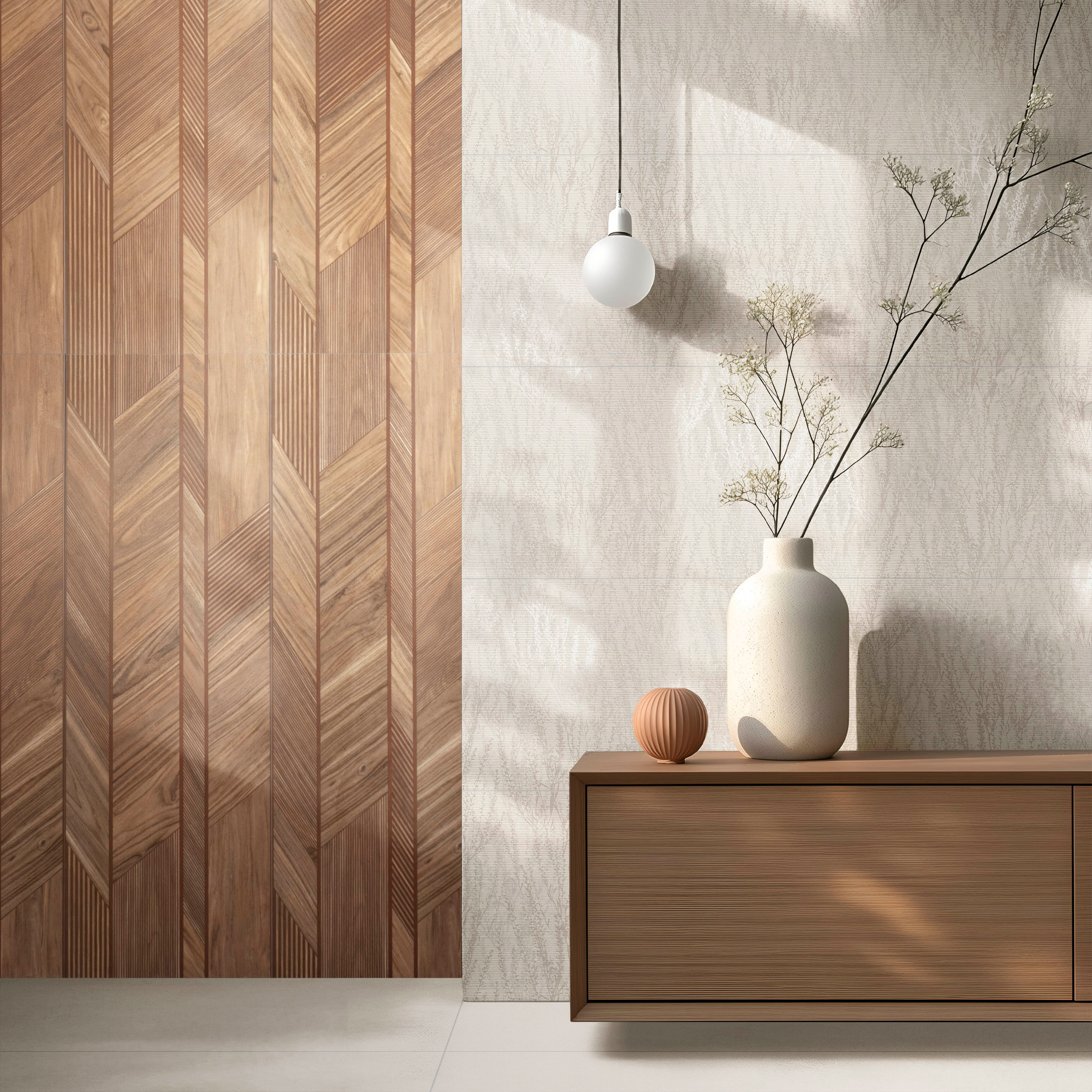Insider SERIES • Article FEATURE
The Evolution of Spanish Ceramics – Tile, Trends and Tapas by Tile of Spain
Featuring Stones and More
Featuring Adex USA
Featuring Porcelanosa
Featuring EMAC Grupo
Featuring EStudio Ceramico
Featuring Peronda Group
Featuring STN Ceramica
Featuring Undefasa
Featuring Vives Ceramica
Featuring Decocer
Featuring Azteca Ceramica
Featuring Cevica
Featuring DUNE Ceramics
Featuring Grespania Ceramica
Featuring Porcelanite DOS
Featuring Tile of Spain
Featuring Gayafores

Spanish ceramics have long been celebrated for their rich history and exquisite craftsmanship. However, the modern ceramic industry in Spain is not merely resting on its laurels; it is embracing a future defined by innovation, sustainability, and artistry.
At a recent industry event in Miami, hosted by Tile of Spain, professionals gathered to explore the cutting-edge developments shaping the ceramics industry today. The event offered valuable insights into the technological, environmental, and aesthetic advancements positioning Spain as a global leader in ceramic tile production. The heart of the Spanish ceramic industry lies in Castellón, a small but influential town near Valencia. Castellón has become a hub of ceramic excellence, home to family-run businesses that span generations. The region is not just a producer but a pioneer, responsible for some of the most significant innovations in the global ceramic sector. From introducing digital printing technology to advancing sustainable production methods, Spanish manufacturers continually push boundaries.


"Ceramics are not just materials; they are a bridge between history and sustainable innovation, offering unmatched performance and aesthetic appeal"
One of the key themes discussed during the event was sustainability, a driving force in the ceramics industry. As global attention turns toward reducing carbon emissions, Spanish manufacturers are leading the way in developing eco-friendly production processes. Innovations include the integration of hydrogen as a partial fuel source in kilns, solar-powered operations for small-format tiles, and ongoing R&D projects exploring the sustainable and cost-effective use of recycled agricultural biomass to harvest hydrogen gas. These efforts aim to minimize environmental impact while maintaining the high-quality standards expected of Spanish ceramics. Ceramic tiles already boast inherent sustainability advantages. Made from natural materials such as clays, feldspar, and silicates, they are free from chemical reactions throughout their lifecycle, making them durable and recyclable. Additionally, tiles are resistant to fire, water, and UV damage, offering long-term value and resilience in architectural applications.


Advances in digital printing have revolutionized the aesthetics of ceramic tiles. Today’s tiles can mimic natural stones, woods, and marbles with remarkable realism, thanks to innovations like inkjet printers capable of using up to 12 color and effect bars. This technology allows for detailed textures, varied finishes, and even structural effects, transforming tiles into highly tactile and visually dynamic surfaces. Another breakthrough is through-body decoration, where patterns and veining penetrate the entire thickness of a tile. This ensures that cuts and edges retain the same aesthetic appeal as the surface, making tiles an ideal choice for countertops and large-format installations. Such innovations are redefining how ceramics can be used in design, offering unprecedented versatility.


"With a legacy of craftsmanship and a focus on innovation, Spanish ceramics redefine architectural possibilities with beauty, resilience, and eco-conscious design."
While ceramics are inherently durable and timeless, Spanish manufacturers are mindful of creating designs that balance contemporary trends with enduring appeal. Current trends favor nuanced neutrals over stark contrasts, blending warmth and subtlety to harmonize with diverse interiors. Biophilic design, inspired by nature’s organic forms and textures, is another driving aesthetic, fostering a deeper connection between built environments and the natural world. Rounded edges and softer forms in tile design echo this humanistic approach, creating spaces that are not only visually appealing but also welcoming and tactile. Enhanced with metallic finishes and reactive glazes, these designs shift in appearance based on lighting and perspective, adding an interactive dimension to ceramic surfaces.


Spain’s ceramic industry plays a vital role in the U.S. market, its largest export destination. The collaborative relationship between the two regions was a focal point of the Miami event. Networking opportunities, such as the annual Passport to Creativity tour, strengthen this bond by bringing architects, designers, and manufacturers together to exchange ideas and foster innovation. Ceramics are among the oldest materials used by humanity, with examples dating back thousands of years. Despite their historical roots, they remain a cornerstone of modern architecture, offering a unique blend of tradition and cutting-edge technology. Spanish tiles continue to evolve, embodying the dual priorities of sustainability and innovation without compromising on beauty or performance.


In an era of increasing skepticism and misinformation, the ceramics industry offers a model of transparency. From production to installation, ceramic tiles provide unparalleled honesty in their composition and lifecycle. As natural products derived from the Earth, they embody a commitment to both environmental stewardship and design integrity. The Spanish ceramic industry is poised for further growth, leveraging its technical expertise and creative vision to address global challenges. As the industry navigates its path toward carbon neutrality by 2050, it exemplifies how heritage and innovation can coexist to create sustainable solutions for the built environment.


Spanish ceramics are more than just tiles; they are a testament to the harmony between art, technology, and the environment. By embracing sustainability and pushing the boundaries of design, the industry ensures its products remain relevant and inspiring for generations to come. With each advancement, Spanish tiles reaffirm their position as a material of choice for architects, designers, and homeowners worldwide.

